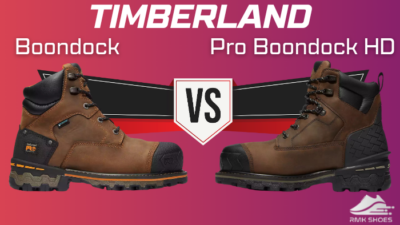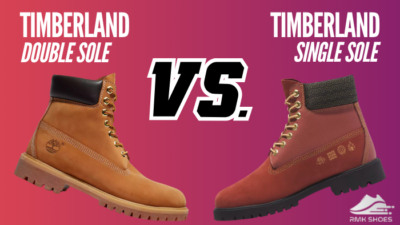In the realm of CrossFit shoes, RAD, NOBULL, and TYR are prominent for manufacturing some extraordinary shoes.
Each brand approaches several top-rated models to the athletes for various exercise needs. Finding the best pair relies on the user’s training style and requirements.
Throughout this article, I will compare the RAD ONE versus NOBULL Trainer versus TYR CXT-1 Trainer.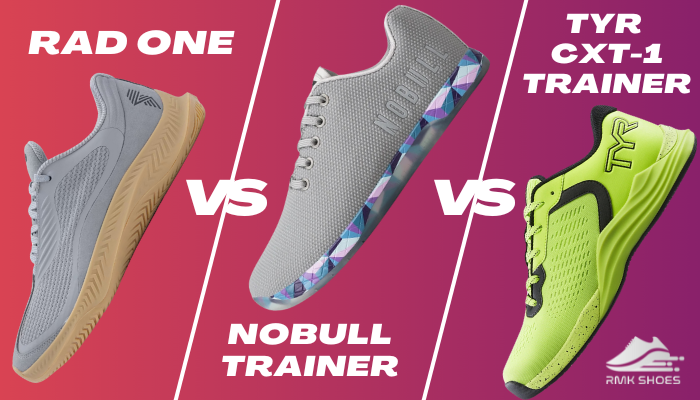
So, let’s dive into the fascinating world of cross-training shoes to track down the best pair.
Overview of RAD ONE, NOBULL Trainer, and TYR CXT-1 Trainer
R.A.D (Rally Against Destruction) is a newcomer to the CrossFit footwear industry, while Nobull and TYR have dominated the fitness footgear sector for a couple of years.
Each manufacturer excels in producing highly durable, versatile, and high-performance cross-training shoes for CrossFit, lifting, and high-intensity workouts.
RAD ONE is a versatile cross-training shoe with an insane balance of stability and responsiveness. It performs extraordinarily in lifting and CrossFit due to the flexible and springy Swell Foam EVA midsole.
On the contrary, the NoBull Trainer is a highly durable and stable cross-training shoe best for weightlifting and high-intensity workouts.
With a SuperFabric upper, it has the best abrasion resistance and breathability.
Finally, the TYR CXT-1 Trainer with a Surge NRG Foam midsole is a high-performance cross-training shoe suitable for competitive events and energy-intensive training sessions.
Considering all of these significant and minor adaptations, jump down to the following section to learn about the specialized specs of the RAD ONE, NoBull Trainer, and TYR CXT-1 Trainer.
Technical Specifications of RAD ONE, NOBULL Trainer & TYR CXT-1 Trainer
Let’s compare the technical specifications and features so that you can quickly understand the similarities and dissimilarities between these CrossFit shoes.
| Parameters | RAD ONE | NOBULL Trainer | TYR CXT-1 Trainer |
|---|---|---|---|
| Midsole | SwellFoam N2 | Thick EVA midsole | Surge NRG Foam |
| Midsole Density | Lower density | Higher density | Medium-high density |
| Outsole | Full rubber outsole | Flat and stable carbon rubber outsole | Full rubber with patent-pending stability platform |
| Feel | Soft and bouncy | Firm and stable | Responsive and supportive |
| Weight | 9.2 oz (for Men's 10) | 12.2 oz for Men's 10) | 12.65 oz for Men's 10) |
| Heel to Toe drop | 6 mm | 4 mm | 9 mm |
| Tongue | Breathable and thin mesh | Comfortable and thicker padded mesh | Thick and long padded mesh |
| Sizing | True To Size | True To Size | True To Size |
| Width | Medium | Medium | Medium-narrow |
| Durability | Excellent overall durability | Most durable | Very durable |
| Price Range | 140 - 150$ | 129-159$ | 130 - 150$ |
| Better Suits | HIIT training, CrossFit, and plyometrics | Cross-training, heavy weightlifting, and day-to-day wear | CrossFit and athletic training |
Key Characteristics Comparison of RAD ONE, NOBULL Trainer & TYR CXT-1 Trainer
It’s hard to determine all the ins and outs of these great cross-training shoes by staring at their technical specifications.
Each model is the best from their manufacturer, and obviously, they were made with different materials and technologies.
So, allow me to elaborate on every little aspect of RAD ONE, NOBULL Trainer, and TYR CXT-1 Trainer.
Upper: Materials & Toe
A perfect pair of shoes can metamorphose your body language and attitude. The upper and toe boxes are crucial for better fittings and protracted period wearing for cross-training shoes.
The RAD One model comes with a mesh upper and suede leather wrapping along the edges. The toe box is covered with a double layer of stitching to secure your toes from wounds.
With an extensive toe box, this model offers more room for the toes to spread.
Most importantly, the mesh-like upper material provides excellent breathability for extreme workouts and stretches when necessary.
NoBull Trainer, on the other hand, utilizes a heavier, breathable, and abrasion-resistant SuperFabric upper with protective guard plates that make it more durable.
The toe box of this model is broader than standard and offers some extra space for natural toe splay.
The TYR CXT-1 Trainer has a breathable upper covering the forefoot and midfoot.
The back of the shoe (sidewall) is wrapped with TPU synthetic overlays.
Its anatomical toe box includes an internal toe guard. While wearing this shoe, I realized this toe box is mismatched for wide feet.
In short, the upper material and toe box of RAD One and NoBull Trainer outshine the TYR CXT-1 Trainer with better perforation and wider toe box.
Tongue and Lacing System
A fine-tuned tongue and reliable lacing system are essential for better fittings and saving your feet from ankle arthritis, bunions, and other foot conditions.
The RAD ONE has a different lacing structure than the other models. It features four internal eyelets and an outer metal eyelet. I found this lacing to be more gripping, and it allows more adjustments.
The tongue of the RAD ONE is long and gusseted with a considerable amount of cushioning.
Both the NoBuull Trainer and TYR CXT-1 Trainer have five eyelets.
However, the TYR CXT-1 Trainer model shines with an additional traditional eyelet that assists in lace-locking.
Unfortunately, there is no gusset on the Nobull Trainer, but the YR CXT-1 offers a gusset and two loops for more secure fittings.
Each model has a lightweight, comfortable, and padded tongue with a perfect lacing system to secure your feet even on the hardest cross-training.
Midsole & Outsole Tech
Without a doubt, the midsole and outsole construction of a training shoe is crucial for getting the most out of them.
First, let’s talk about the midsole.
The midsole of RAD ONE is made out of SwellFoam N2 (composed of sugar cane and other materials) midsole technology. It provides a perfect balance of stability and responsiveness. This midsole doesn’t squash even in heavyweight lifts.
NoBull’s Trainer, on the contrary, is accompanied by a more dense midsole that feels firmer.
The midsole of the TYR CXT-1 Trainer is known as Surge NRG foam (TYR’s version of EVA foam). This midsole provides a well-balanced and stable feel.
Moreover, this midsole has a rubber wrap-around for better arch support and, most importantly, to protect your feet.
Now, let’s discuss the differences between outsoles.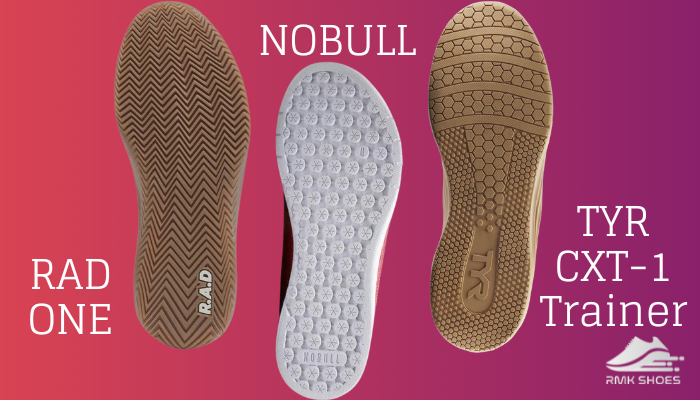
All three models share complete rubber outsoles, which is very common for cross-training or CrossFit shoes to deliver extraordinary traction.
Thankfully, I never slip wearing these models, even while training on concrete, wood boards, rocky, or other harsh surfaces.
Though all three models have full rubber outsoles, there are differences in the lug patterns.
For instance, the RAD ONE has herringbone tread patterning, and NoBull’s & TYR’s Trainer has a traditional tread patterning.
In summary, the RAD ONE stands out among other models because of its perfectly balanced midsole and herringbone lugs of the outsole. But other models are also close behind due to their comfort, slip-resistance, and stability.
Design & Aesthetics
Each brand has its own design preferences, and the same goes for sneakerheads.
Fortunately, there are multiple similarities in design patterns as all of these models are cross-training shoes.
In the design context, the first thing I noticed was the upper.
While the NoBull Trainer features a one-piece SuperFabric upper, RAD ONE and TYR CXT-1 Trainer feature a breathable mesh upper.
The abrasion-resistant material of NoBull Trainer is immensely breathable, easier to clean, and includes a waterproof coating.
The upper of RAD ONE covers from the forefoot to the heel and offers additional durability by utilizing extra synthetic overlays over the toe to midfoot.
In contrast, the TYR CXT-1 Trainer has a breathable mesh upper with a bootie construction (synthetic overlays) at the back of the shoe.
But what about aesthetics?
Well, each model features a minimalistic design pattern and offers multiple colors.
For instance, the RAD ONE is available in vibrant and neutral colors, the NOBULL Trainer offers a wide range of classic and bold colors, and the TYR CXT-1 Trainer comes with a selection of sporty and modern colors.
Additionally, I prefer the internal lacing system of RAD ONE.
Concisely, each model outshines others with their unique and eye-catching design pattern and aesthetics.
Overall, I will put forward the RAD ONE over others because of its internal lacing system, vibrant & neutral colors, and suede & synthetic overlays.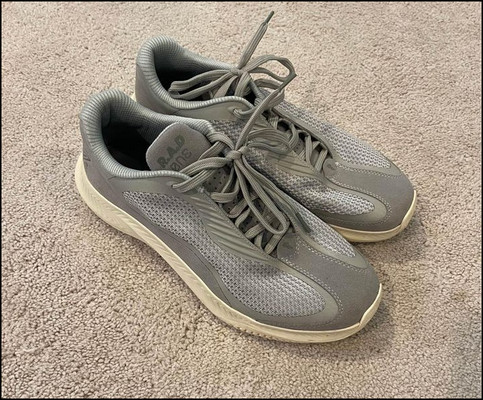
Rock-Solid Stability
Stability is the primary concern of athletes and fitness buffs while picking the perfect pair for their day-to-day training or exercise.
I have completed several hours of fitness training and deadlifted over 400 lbs wearing these shoes.
To be honest, none of them disappoint me for a single moment.
RAD ONE is ideal for lifting and CrossFit because of its springy Swell Foam midsole. This model is highly responsive and suitable for short runs and light weightlifting.
With a 6 mm offset, you may not feel close enough to the surface in case you have poor ankle mobility.
However, the herringbone lugs of the RAD ONE will provide excellent traction on every surface, such as rubber pads, yoga mats, wooden platforms, or outdoors.
On the flip side, the Nobull Trainer is well-known for its flat outsole design, which delivers outstanding stability on all surfaces.
Especially if you’re doing heavy weightlifting or exercise with multi-directional movement, this model from Nobull will ensure superior stability than other models. If you’re a taller lifter and love higher heel-to-toe drops on our training shoes, the best model is the CXT-1 Trainer from TYR.
This model is improved for lifting and other activities, such as wall balls and high-bar squats.
Shortly, choose the RAD ONE if you’re fond of CrossFit shoes with dynamic versatility. In case you’re a heavy lifter, go for the NoBull Trainer and pick the TYR CXT-1 Trainer if you appreciate a higher offset.
Responsiveness & Comforts
Because of different technology and brand choices, each shoe offers diverse responsiveness and comfort.
In my findings, the RAD ONE feels more soft and bouncy thanks to its Swell Foam midsole.
This model provides excellent energy return and, most importantly, a more responsive feel even in high-impact activities. You will instantly feel fast and agile with a much comfy cushioning.
Though the NoBull Trainer offers extraordinary support and stability, the stiff midsole of this pair doesn’t provide the responsiveness or the comfort of the RAD ONE.
The TYR CXT-1 Trainer added another dimension by merging the responsiveness and cushioning using the Surge NRG Foam midsole.
I was astonished at how comfortable this model runs for running, jumping, and even high weightlifting.
Overall, the RAD ONE has the best responsiveness, the TYR CXT-1 is the perfect combination of responsiveness and comfort, and the NoBull Trainer lacks responsiveness due to its less spongy midsole.
Performance & Durability
Surprisingly, each model can provide consistent performance, and the materials are highly durable.
Whether you’re a heavy weightlifter or an energy-intensive athlete, you won’t regret choosing these pairs.
RAD ONE offers extraordinary cushioning and energy return. This high-performance, lightweight, and flexible pair satisfied me in most workouts, such as plyometrics, jumps, etc.
The RAD ONE comes with a Swell Foam midsole and rubber outsole, and combining both, it offers excellent performance with the best cushioning.
Unfortunately, its narrower toe box is not what you want for your wide feet.
Nobull Trainer is widely prevalent among athletes due to its superior stability and high performance.
This pair is exceptionally good for weightlifting and other strength training exercises.
This model is undoubtedly the most durable of the three shoes.
With a super durable mesh upper and high-abrasion rubber outsole, you will get the best performance and superb traction on every surface.
But what about the TYR CXT-1 Trainer?
TYR’s Trainer provides a responsive and versatile midsole and a full rubber outsole with varied tread patterns, making it a high-performance CrossFit shoe with superior traction.
The solid upper, Surge NRG Foam midsole, and the full rubber outsole make it durable. Among the three models, this pair is the most suitable for rope climbing.
However, the heel area of the outsole was damaged due to frequent rope climbing sessions.
Fortunately, if handled with care, this pair can continuously provide responsiveness and cushioning for several years.
To be frank, the long-term durability and ultra-high performance of NoBull and RAD ONE outshines the TYR Trainer.
Still, pick the TYR CXT-1 Trainer if you’re a climbing person.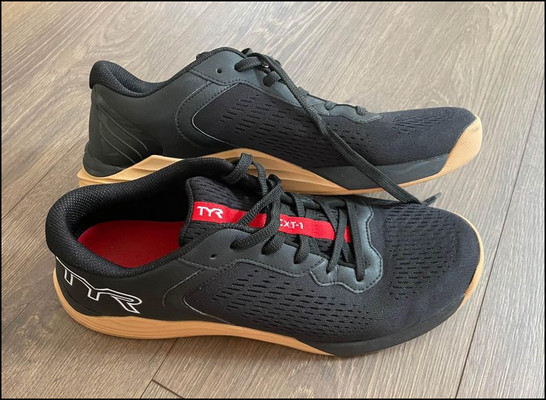
Price and Significance
Depending on your shoe size and color preference, these models typically cost between $130 and $150.
While the NoBull & TYR’s Trainer is available for around $130, the price of RAD ONE is around $150. As you can see, the RAD ONE is comparatively pricer than other models.
Undoubtedly, these CrossFit shoes are premium in nature, and they’re worth every penny.
Pros & Cons: RAD ONE vs NOBULL Trainer vs TYR CXT-1 Trainer
With all the aforementioned discussion, it’s clear that there are several aspects where one model excels over another. The perfect pair depends on your necessities and fittings.
Now, look at each shoe’s pros and cons to identify the ideal one.
RAD ONE
- »Bouncy and responsive midsole.
- »Deliver a versatile performance.
- »Suitable for casual use.
- »Secure toes and excellent grip.
- »Breathable mesh upper.
- »Clunky for running.
- »Run a little narrow for wide feet.
NOBULL Trainer
- »High-abrasion rubber outsole.
- »Extremely stable and durable construction.
- »Very easy to clean the upper.
- »No breaking down issues.
- »Minimalistic design.
- »Comfortable wear.
- »Not recommended for running or long-distance walking.
- »Lack of breathability because of SuperFabric upper.
TYR CXT-1 Trainer
- »Admirable ankle & arch support.
- »Biggest heel-to-toe drop.
- »Breathable mesh upper.
- »Midfoot and heel wrap.
- »Comfortable, attractive, and versatile.
- »Highly responsive and stable midsole.
- »Availability issues.
- »Slightly short lace.
- »Heavier than others.
Verdict
As you can see, all three models are great and suitable for CrossFit and other high-intensity workouts.
However, some key differences place one over another.
I suggest RAD ONE for athletes who are seeking responsiveness, swiftness, and comfortable cushioning from their CrossFit shoes.
Nonetheless, you should pass this one if you focus on better stability and have wide feet.
If you’re looking for a cross-training shoe that provides super stability and maximum support for heavy weightlifting and strength training, the NOBULL Trainer is the perfect pair.
Due to its low stack height and high-abrasion rubber outsole, you will always feel more closer to the surface and confident, even during heavy deadlifts.
Finally, choose the TYR CXT-1 Trainer if you’re seeking a balance of performance and comfort from your cross-training shoe. You will love its versatile performance, responsive midsole, and durable construction.
Frequently Asked Questions
What are the best cross-training sneakers?
There are a ton of cross-training sneakers from various prominent shoe manufacturers, and only a few models surpass others in quality and durability. The best cross-training shoes are NoBull Trainer (Trainer+), Reebok Nano X2, RAD ONE, Nike Metcon 8, and TYR CXT-1 Trainer.
What shoes do most CrossFit athletes wear?
From numerous available cross-training shoes, CrossFit athletes prefer the Reebok Nano, NoBull Trainer (Trainer+), and Nike Metcon 8. Yet, some athletes also pick RAD ONE and TYR CXT-1 Trainer for their versatility and comfy design.
What is the most used shoe at the CrossFit Games?
In the 2022 CrossFit games, the TYR CXT-1 Trainer was the most used and most popular shoe. Despite that, Reebok Nano is also a popular CrossFit shoe at the CrossFit Games due to Reebok’s sponsorship.
What to look for when buying CrossFit shoes?
When buying CrossFit shoes, you must consider several aspects, such as offset (heel-to-toe drop), toe box, midsole & outsole, and stack height. Also, look for a stretchy upper and comfy insole.

